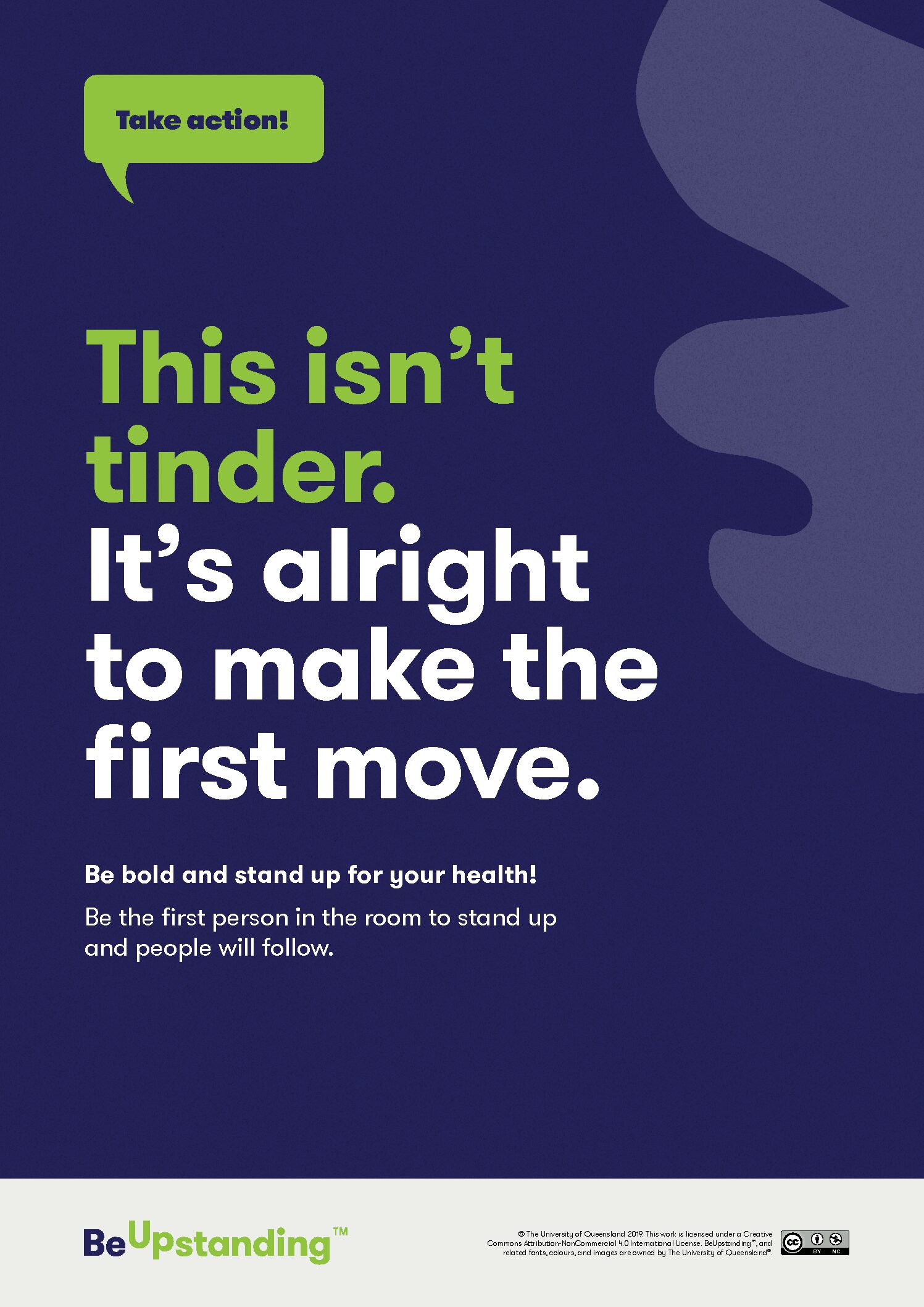By Anna Rasmussen
On the 4th October it was Diabetes Australia Walk to Work Day. Walking has become an integral part of my daily routine. I spend between two and ten hours each week walking to and from destinations including university or the hospital where I study, the weekend markets, or the shops. The World Health Organisation has acknowledged active transport as a way to improve global environmental and health outcomes. My motivations are primarily to benefit my physical and mental health, but walking has other benefits such as being non-polluting, posing little danger to others, saving money, and, perhaps mostly importantly, I enjoy it.
I am, however, one of the minority in Australia that uses walking as their main form of transit. The 2016 Census found that 69% Australian commuters travelled to work by car, and another 5% as car passengers, while 9% used public transport, 1% cycled, 4% walked, and 4% used multiple methods. This is largely consistent with rates from 2011, with a 0.5% rise in driving a car and a 0.7% increase in train use, while cycling and walking declined 0.1% and 0.3% respectively. Furthermore, infrastructure and culture is becoming increasingly car-centric.
This is not to say that car ownership and driving are always bad. It can be associated with feelings of control or mastery, increased self-esteem, increased accessibility and autonomy, prestige, convenience, and protection against the weather. However, many trips less than five (or even two) kilometres are made by car, which can often be substituted with active transport. And even if the distance necessitates a car or public transport, you can add some activity into your transit by parking or exiting public transport at least one kilometre from your destination in order to walk the final distance.
Benefits for physical health
The Australian physical activity guidelines recommend at least 150 minutes of moderate intensity physical activity every week, but more than half of Australians do not meet this recommendation. Walking at 5-8km/h expends enough energy to be classified as moderate intensity physical activity (for middle-aged and older adults, as well as sedentary younger adults), and is an easy and accessible way of meeting the physical activity recommendations.
It is important to find ways to meet the physical activity guidelines because physical inactivity is associated with an increased risk of chronic disease, and this risk is often grossly underestimated. Doing at least 30 minutes of physical activity each day lowers risk of cardiovascular disease, obesity, diabetes, cancer (especially colon cancer), depression and osteoporosis, and leads to decreased risk of all-cause premature mortality.

Research in the UK has found that workers are more likely to meet recommended physical activity levels if they walk or cycle to work. In a study with commuters in south-west England who lived close to their workplace, people who walked to work had 45% more weekday physical activity compared to those who drove, while walking to work comprised of almost half their total weekday moderate-to-vigorous physical activity. Furthermore there was no difference in weekend physical activity between walkers and drivers.
Overall, research has found that active commuting can play an important role in reducing obesity and the risk of cardio-metabolic disease. Specifically, active commuting has been associated with a lower percentage body fat among 40-69 year-olds in the UK, lower levels of diabetes and hypertension, reduced abdominal obesity and a better blood lipid profile, and better aerobic fitness. Conversely, among commuters in Adelaide, commuting by car was associated with gaining 1.5kg more weight on average over four years than commuting by other methods, and this association was also present among people who were physically active in their leisure time.
Finally, walking doesn’t risk causing harm to others, whereas vehicles have risk of causing death or injury to occupants and others in the surroundings. In Australia 2010-12, land transport deaths were the 9th leading cause of premature mortality (deaths under 75yo). It was the leading cause of death in children 1-14 years old, the second leading cause of death in 15-24 year olds, and the third leading cause of death in adults 25-44 years old. Land transport deaths include occupants of vehicles, pedestrians, cyclists and motorcyclists.
Benefits for mental health
Personally I first became interested in the personal benefits of active transport a few years ago when I conducted a self-experiment for a psychology class. I was interested in finding whether walking could help me manage depressive symptoms after an episode of major depression previous. Each day I would flip a coin to decide whether I would walk 45 minutes to university or catch the bus. Then I would measure my level of attention in lectures as well as complete a scale at the end of the day for stress, anxiety and depression symptoms. I found that on days I walked to university I payed more attention in lectures and had reduced depressive symptoms at the end of the day. Since then, I have walked for 30 minutes most days of the week.
This effect is consistent with wider research findings. Physical inactivity and sedentary behaviour are associated with poorer quality of life and mental health, including psychological distress and depression.
Depression and other mental illnesses are common in Australia. One in five Australians aged 16-85 years old experience mental illness in a given year, of which anxiety, depression and substance use disorder are the most common. 6.2% of Australian 16-85 year olds experience an affective disorder in a year, the most common affective disorder being a depressive episode (4.1%). The usual treatment for depression is antidepressants and/or psychotherapy, but lifestyle measures such as physical activity can play an important role in managing duration and severity of symptoms. Evidence indicates that exercise should be recommended for treatment of depression, as it can be effective alongside other treatments or on its own. Furthermore, antidepressants have out-of-pocket costs, side effects and take weeks to months to achieve the full therapeutic effect.
Sedentary women are more likely to develop depressive symptoms than active women, but starting regular physical activity, even mild to moderate levels such as walking, can reduce this risk. Walking specifically has been found to be a promising treatment for depression, and is easily undertaken, has little or no financial cost minimal risk of adverse effects, and can be easily incorporated into your daily routine. A study in 2007 found that walking on a treadmill for 30 minutes each day for ten days improved depression scores among inpatients with a major depressive episode, indicating walking can substantially reduce symptoms of depression within a short time of starting.
As well as depression and associated symptoms, commuting by car has also been found to be associated with increased stress. Specific sources of stress include delays, other road users and congestion. A study from 2009 found car commuting stress to be associated with more negative moods on arrival home or at work, a lower tolerance threshold, cognitive impairment, increased illness and work absenteeism, job instability and overall lower life satisfaction. Another study that looked at perceptions of different transport types found driving perceived as stressful and walking as relaxing.
Environmental benefits

Greenhouse gas emissions from the burning of coal, oil and gas are driving climate change. This is leading to rising sea temperatures and levels, intensifying extreme weather events around the world (impacting on agriculture and other industries), and human health impacts (including malnutrition, vector-borne diseases, and cardiovascular and respiratory impacts of air pollution). Transport contributes to a large percentage of greenhouse gas emissions. 18% of Australia’s greenhouse gas emissions are from transport, of which half comes from cars. Transport is Australia’s third largest source of greenhouse gas emissions, and it is increasing faster than emissions from any other sector. Transport emissions are expected to increase by 80% between 2007 and 2030. These high levels are due to high polluting cars, high car use, long distances travelled, lack of greenhouse gas emission standards and low use of investment in public or active transport.
Other more local impacts car use has on the environment include air pollution, noise pollution and traffic congestion. Air pollution is has been linked with increased risk of cardiovascular events (including heart attack, stroke and arrhythmias), exacerbation of respiratory illnesses (e.g. COPD, asthma, infections, lung cancer), and exacerbation and development of allergy (including allergic asthma, allergic rhinitis and eczema). Cars contribute to environmental noise pollution, which is associated with sleep disturbance, risk of cardiovascular disease (including hypertension and ischaemic heart disease), and cognitive performance (including attention and memory).
I’m not suggesting that nobody needs a car. In places with limited or no public transport, with children, for your job, for long distances – it is certainly helpful. But, as flagged above, many people use cars for short trips, less than 2km. These short trips can very feasibly be replaced by walking. Furthermore, car emissions are highest when the engine is cold so it even more important to reduce short car trips if possible.
Walking or cycling to work could play a substantial role in meeting greenhouse-gas emission targets and would lead to major public health benefits. Other ways you can reduce your carbon footprint include minimising energy wastage (turn of lights, air conditioners and other appliances when not needed), conserving water and paper, and recycling.
Financial benefits
Walking costs no money, except perhaps for a pair of supportive shoes. If you prefer to cycle, it may cost a few hundred dollars to equip yourself at the beginning with a bike and helmet but it still remains quite reasonable. Public transport costs vary depending on the distance, time of day, concessions, and other factors, but is usually $15 to $55 per week. While I do not own a car and therefore don’t have personal experience with costs such as fuel, registration and licensing, insurance, maintenance, tolls, parking and depreciation, it is estimated to cost $150 to $260 per week, with fuel costing about $71.50 per week. Living in the inner city with no need for a car I save a large sum, and by walking most days instead of taking public transport I save about $6 to $12 per week (I don’t travel far and have student concession fares). This is admittedly a small amount, but it does add up, and is just one reason among many for me to walk.
Enjoyment

I enjoy walking in the morning to set myself up for the day, and the walk home at the end of the day is a nice time to relax and release tension that may have built up during the day. It’s a time to listen to music, daydream, look at the sky, and just slow down and stop worrying about things I need to do. Indeed, this seems to be common in many people who walk to work. Commuters in inner Sydney who walked or cycled to work reported far higher levels of enjoyment during their commute than people who drove or took public transport. Canadian cyclists and walkers are less dissatisfied with their commute and less likely to wish it was shorter, often listening to music, enjoying the scenery or talking on the phone during the trip. Instead of being stressful (driving) or boring (public transport), UK commuters found walking to be relaxing and cycling to be exciting. They didn’t need to worry about congested traffic or transport delays, so travel time was more predicable. And overall, people who walked or cycled to work in London had higher life satisfaction than car commuters.
Factors that influence your ability or willingness to walk to work
Active transport is overall an inexpensive and easy way to incorporate physical activity into your routine, but I certainly live in privileged circumstances that help me maintain it as part of my routine. I currently live approximately 30 minutes walk (about 2.5km) from most of my destinations (university, the hospital, the shops, the market), but this is not the usual experience. The average work-to-home commute in Australia is 16km (though this decreases to less than 10km for people living in the inner city), which makes it unfeasible for most people to walk or cycle the entire distance to work. Other factors which have been found to make somebody less likely to walk or cycle to work include childcaring, needing the car at work, lower socio-economic status, car ownership, and lack of workplace or societal support of active transport.
But if circumstances allow you to travel all the way or part of the distance to work, then I encourage you to give walking a try! Wake up 20-30 minutes earlier a couple of days this week and find a nice route to walk. The hardest part is getting started, but once its part of your routine it is easy and enjoyable to continue.
Tips
- If you can’t walk the whole way, try getting off public transport a few stops early or parking further away to allow you to walk the rest of the way
- Make it as enjoyable as you can – experiment with a couple of different routes, put some music on, or make it time to call friends and family living in other cities or countries
- Check your workplace for a transport access guide. This is a document your workplace may provide to make walking, cycling, or taking public transport to work easier. It can include maps of walking paths, bicycle-friendly routes, bike storage, bus stops and train stations
- Take other opportunities to walk throughout your day by taking the stairs rather than the escalators or lift, or going for a walk during lunchtime. Check out the BeUpstanding toolkit to find other ways you can sit less and move more at work!
- Remember sun safety, especially as summer approaches. It is important to wear a hat (or helmet if cycling) and apply sunscreen










Comments are closed.